Design Guidelines





Our vision for Brookhaven is to be a place where families thrive. This vision underpins the masterplanning and design work that goes in to making Brookhaven somewhere people will want to live, both today and in the future.
A masterplanned community like Brookhaven brings together and seamlessly coordinates a number of different factors or ingredients to make it successful. Some of these include:

Working with the wonderful natural landscape – to enhance and feature this as part of all residents’ experience of living at Brookhaven. This includes retaining mature trees wherever we can and making waterway and wildlife corridors accessible through multi-use trails.
Working in partnership with Council and other community providers to deliver community parks and activities that provide health, wellbeing and learning opportunities. This work is supported by a dedicated Community Development Manager.
Ensuring that a consistent and enjoyable environment for all is created, maintained and enhanced.
This last point is made possible through the provision of the Brookhaven Design Guidelines and a design approval process for all homes designed and built in Brookhaven. The Design Guidelines encourage a cohesive streetscape while promoting variety in house design that contributes
to creating a neighbourhood that is visually interesting, environmentally conscious and is of a consistent high quality.
There are a number of benefits to having these Brookhaven Design Guidelines in place.
They provide certainty to all future residents and property owners about the standard of housing and environment that is being created.
They will assist in ensuring your home is a comfortable, healthy and environmentally conscious – through simple measures like choosing a different roof colour.
They result in everyone who owns a property in Brookhaven being responsible for and playing a role in ensuring Brookhaven achieves a strong neighbourhood character.
The Brookhaven Design Guidelines form part of the sale contract for land at Brookhaven and are enforceable through this contract. The obligations in the Design Guidelines also pass on to future owners – ensuring a consistent standard is maintained.
We believe these Design Guidelines are an important and essential part of making Brookhaven a success – today and in the future. And that this will ultimately contribute to protecting and enhancing values and ensuring Brookhaven is a place where families can thrive.
This document is to be used as a guide for the achievement of the Brookhaven project vision. Design innovation over and above the requirements outlined within this document is encouraged, and we welcome the opportunity to discuss how design innovation can correlate to quality housing and living outcomes
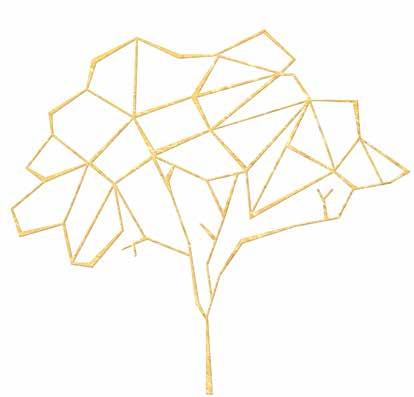
In order to construct your home, you must apply and have an application package approved by the Design Review Committee (DRC) Design Approval by the DRC does not constitute a building approval or compliance with building regulations. Upon obtaining Design Approval from the DRC, a building permit must be obtained from the local Council or a private Building Certifier before construction can commence
The DRC will endeavour to assess proposals in the shortest possible time, generally within ten business days of receiving all required information for the application. Approved plans will be stamped approved, and returned to the applicant or their agent The progress of the home will be monitored by the DRC to ensure that it conforms to the approved design
P PLIC
WA RDE
PL A NS A RE A MEND E D O R
FU R TH E R IN F OR M ATIO N
PR OVID E D
AP P LIC AT IO N
DECLIN E D OR FU R T HE R IN F OR M ATION REQUIRE D
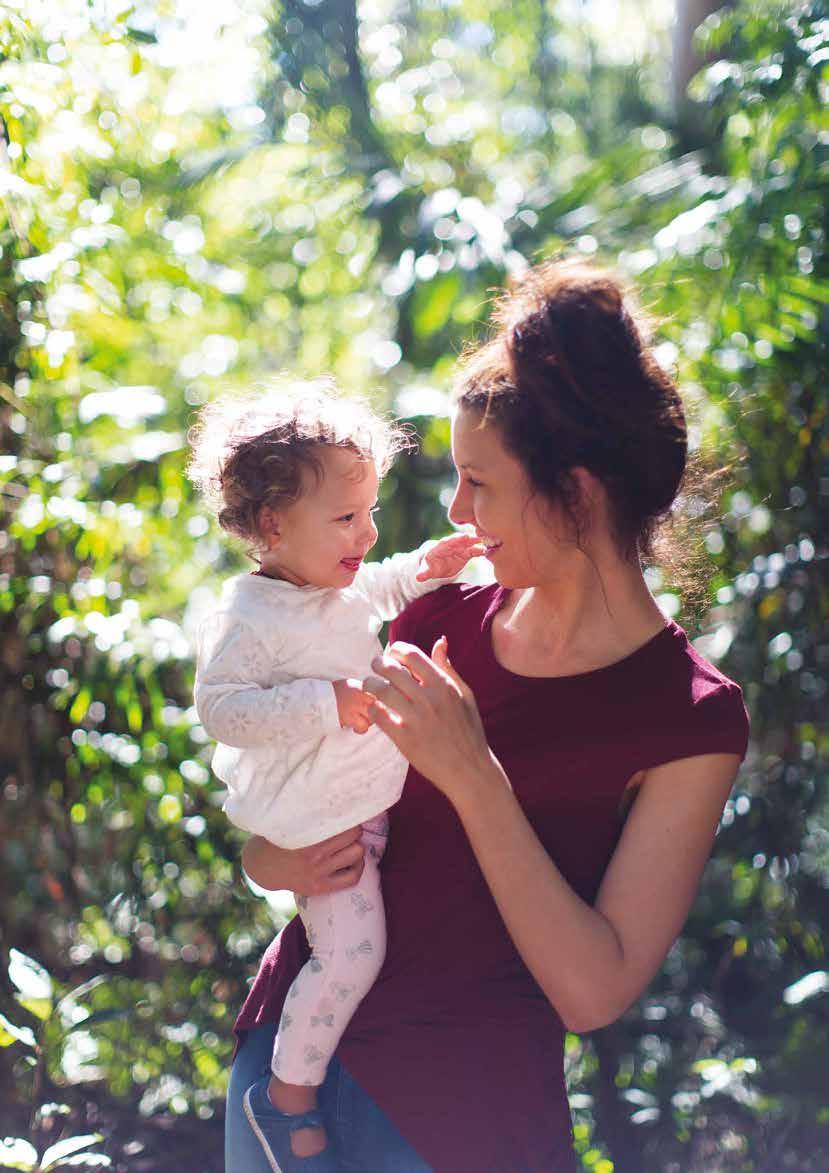

Duplication of façades will not be permitted side by side Variations of the following elements are necessary:
• Roof form
• Entry design
• Colours and materials
• Window configuration
Eaves are required to be a minimum of 60% of the front façade.
Wall length is not to exceed 6m before it projects or is recessed by a minimum depth of 450mm, accompanied by a change in eave line.
Dwellings must provide at least one habitable room facing the street, for example a bedroom or living room
Dwellings must incorporate an entry porch with its own roof with a minimum depth of 1.5m and not less than 4m 2 in size.
The façade area facing the street or public for passive surveillance A minimum of 20% is required (excluding front and garage doors)
A corner lot facing a secondary street or that has a common boundary to a park or reserve must be addressed in the same manner as the primary street façade.
Eaves are required to be a minimum of 60% of the secondary façade.
Wall length is not to exceed 8m and must incorporate an eave change, and a veranda or porch that is recessed or projects by a minimum depth of 450mm
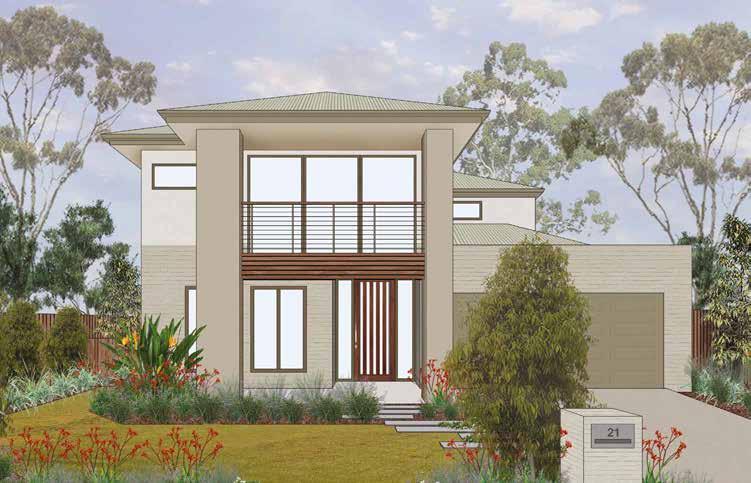
Lots 1073, 1074 & 1075 have direct park frontage and require a high level of presentation due to the unique location.
• Dwellings on these lots must be double storey.
• The front facade of the dwelling, including the covered entry, must address the park.
• Fencing to the park boundary will be installed by the developer and must not be altered.
• Side boundary fencing must finish at the front building line and cannot extend to meet the park boundary fencing.
• Driveways will be installed by the developer. If these are to be altered or extended, the same material must be used: exposed aggregate in colour "Boral Canvas" with 5mm stone "Boral River Red".
Contemporary design is to be reflected in all homes. Natural earthy tones to reflect the natural surroundings of the community are encouraged (Federation and Heritage design and colours are not permitted)
A minimum of 2 materials and 2 colours is required for the Front and Secondary Street Facades, with not more than 60% of any one material or colour.
Materials and Finishes - Permitted:
• Brickwork (limited to 30% of the facade)
• Rendered or bagged and painted brick
• Natural timber (painted or stained)
• Stone Materials and Finishes - Not Permitted:
• Double height bricks
• Unfinished commons brick
• Reflective finishes including metal sheeting
• Bright finishes and colours
• Unfinished materials of any kind
Mortar for all brickwork is to be coloured white, o white or blended to match the colour of the brick. Plain and grey mortar is not permitted.
Source materials with third-party certifications to ensure the environmental and social impact is minimised. For example, look for FSC certified timber.
The use of Merbau timber is not permitted as it is an endangered species and is at risk of extinction within the next 35 years.
SECONDARY STREET FAÇADERoofing must be of a scale and form representing Contemporary Queensland Architecture and Design. Roof materials are to consist of COLORBOND® Custom Orb sheeting or Flat Profile roof tiles
1 HIP ROO F
Maximum of 30 degrees and a minimum of 20 degrees
Maximum of 15 degrees and a minimum of 5 degrees
Unfinished and highly reflective materials and vibrant colours are not acceptable. Light coloured roof materials are recommended to keep your home cooler during summer months. We recommend selecting roof materials with a Solar Reflective Index (SRI) above 50 Refer to Appendix B for examples
Letterboxes are to complement the style of the dwelling and have a rendered finish or timber with metal insert. Letterboxes on poles are not permitted.
Fencing to the front is to be transparent and consist of a maximum of 1.2m high open style coloured metal tube fencing (transparent pool style panels) complemented by stained
hardwood timber posts a minimum size of 100mm x 100mm or rendered masonry piers
Fencing to the side and rear boundaries is to be a minimum of 1.8m in height. The side fencing returns and gate must be set back a minimum of 1.0m from the front building line and positioned to provide screening to utilities and rubbish bins, where applicable.
Acceptable styles:
• horizontal or vertical hardwood palings, stained
• horizontal or vertical pine palings, painted to match the dwelling or painted dark grey/ black to minimise the visual impact to the street
• aluminium battens
Feature corner fencing to the secondary street frontage is required on corner lots, as identified in the land sales contract. The feature corner fence is a ship-lapped timber paling fence with capping rail and 100 x 100mm hardwood timber feature posts, painted black where visible from the road.
Feature corner fence Type A is to be installed in instances where retaining walls are absent or they are less than 1.0m high. In these instances the fence is 1.8m high.
Feature corner fence Type B is to be installed in instances where retaining walls are equal to or greater than 1.0m high. In these instances the fence is 1.5m high to reduce the visual impact to the street.
Refer to Appendix D for the fence detail.
Coloured metal sheeting, COLORBOND®, and/or highly reflective materials and colours are not acceptable to any boundary.
Brackets have been provided on all developer installed retaining walls for ease of fence installation where appropriate. Developer installed retaining walls are located wholly within the downside lot in accordance with Council requirements.
Developer installed fencing is to be maintained to the standard by which it was constructed and not altered or damaged in any way.
Garages and carports must include roof design features consistent with the form and materials of the main dwelling
Lots between 10m and 12.49m wide are to be designed with a single or tandem garage or in accordance with Specific Development Controls A. Double garages are permitted on double storey dwellings where the second storey projects 1m forward of the garage wall.
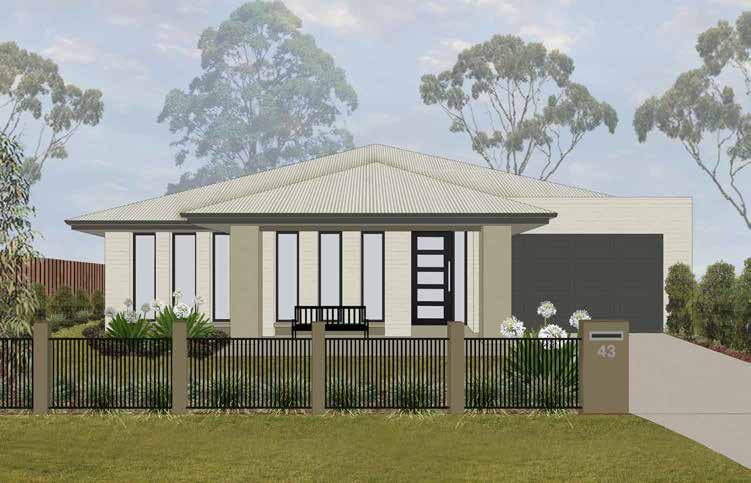
Driveway Materials - Permitted:
• Exposed aggregrate
• Coloured concrete (except light grey)
• stamped concrete
• stencilled concrete
Driveway Materials - Not Permitted:
• plain concrete
• asphalt
All driveways are to be sealed and treated in accordance with manufacturers's instructions to avoid deterioration.
Driveways and crossovers are to be in accordance with Logan City Council requirements.
Driveways must be o set a minimum of 500mm from the side boundary to allow for bu er planting.
Driveways and crossovers are to be completed prior to occupation of the dwelling
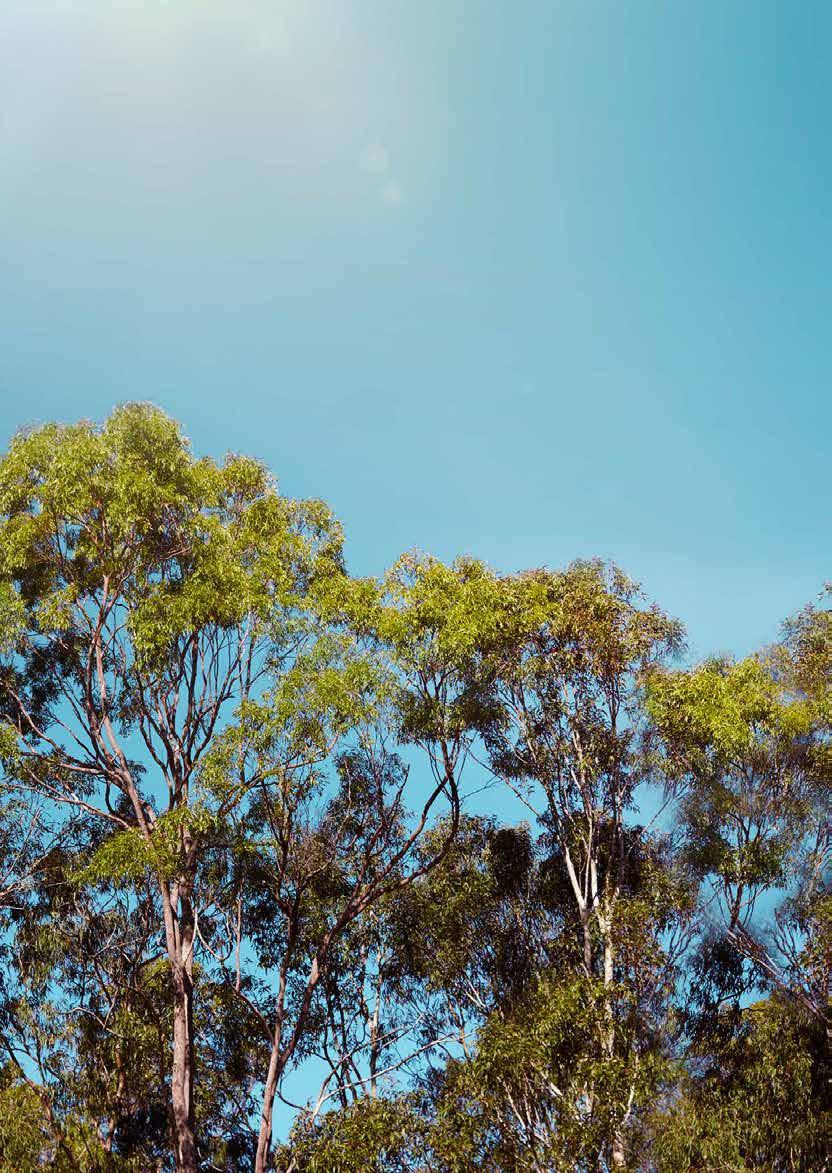
As viewed from the street or public space:
Limited to a maximum of 1.5m in height before use of a 0 5m wide landscape terrace is required
Retaining wall materials are to consist of stone or masonry
Must not be constructed from timber sleepers, unfinished masonry block, or commons brick
The consent from the adjoining property owner should be obtained where retaining walls are closer than 0.6m from the boundary
Full details of heights, materials and location of all retaining walls and embankments are to be submitted for approval
Developer installed retaining walls are not to be altered or removed without consent
Please discuss proposed retaining walls with your adjoining neighbour prior to construction to ensure that the height of the retaining is appropriate to suit the finished ground levels on adjacent blocks
Appropriate approvals are to be obtained where required from the Local Council or regulatory body
Must not be visible from the street or public space.
Construction of the dwelling and external works must be continuous and completed within the time provided in the Contract
Provide a bin or enclosure for the duration of construction and ensure it is emptied regularly to avoid overflow of rubbish to site and surrounding areas
Maintain site cleanliness at all times
Dumping of soil and rubbish on any sites will not be tolerated and will be reported to the local authority
An agreement has been entered into with OptiComm Co Pty Ltd to supply the project with a broadband fibre optic cable n etwork.
To enable connection to the OptiComm network you must wire your home in accordance with the Brookhaven OptiComm Cable Entry Guide.
A choice of retail service providers utilise the OptiComm network. Further details are available on the OptiComm web site.
www.opticomm.net.au/my-connection/find-a-service-provider/
A connection fee may be required prior to connection which will be paid by the developer.
Any shed or outbuilding must not be attached to the main dwelling
Ancillary items, ground mounted equipment and services are to be screened where visible from the street or public space and include but not limited to:
Heating and cooling units
arbage and refuse bins

Clothes and washing lines
Pool, spa and pumps
The OptiComm network at Brookhaven does not have provision for free to air TV. Builders will need to install and connect a traditional aerial during construction of the property.
An agreement has been entered into with APA to supply the project with natural gas
A range of retail service providers utilise the APA natural gas network, with no restrictions on your choice of provider

Natural gas appliance and hot water system selections are to be made with your builder
A water meter application is to be made to Logan Water for installation of the water meters by the home owner/builder.
The following information is provided as a guide to assist with locating a home on the lot, and provides a summary of the key resi dential design and siting requirements in relation to the range of lot types proposed within Brookhaven.
Allotment Type Detached
Allotment Width 10.00 - 12.49m 12.50 - 13.90m >14.00m
Ground Floor Setbacks (min)
First Floor Setback (min)
Ground Floor Setbacks (min)
First Floor Setback (min)
Ground Floor Setbacks (min)
Front Setback (Primary Frontage)
First Floor Setback (min)
To Habital Room 4.0m 4.0m 4.0m 4.0m 4.0m 4.0m
To Garage Door 5.0m n.a 5.0m n.a 5.0m n.a
Projections / Porticoes / Balconies
3.0m 3.0m 3.0m 3.0m 3.0m 3.0m
Rear Setback (to Habital Room) QDC MP1.1 or MP1.2 *
Side Setback Built to Boundary Walls (Mandatory)
0 QDC MP1.1 or MP1.2 * 0 QDC MP1.1 or MP1.2 * 0 QDC MP1.1 or MP1.2 *
Side Setback Non Built to Boundary Walls QDC MP1.1 or MP1.2 *
Side Setback on Corner Lots Secondary Frontage or Ad jacent Park Space
1.5m 2.0m 1.5m 2.0m 1.5m 2.0m
Corner Lot Building Envelope Truncation Design Please refer to diagram (1) below
* MP1.1 is applicable to lots < 450m2 and MP1.2 is applicable to lots > 450m2
* For corner lots the front boundary is determined to be the boundary with the shortest length.
Preferred Garage Location
Mandatory Garage Type
Along built to boundary wall or otherwise indicated on the Plan of Development
Single, Tandem Double will only be permitted where;
• Double Storey Dwelling; or
• Complying with Specific Development Controls A.
Site Cover
Private Open Space (POS)
Maximum Length of Built to Boundary Wall
Site coverage does not exceed 60% of the total site area except where covered private open space is proposed. The total site coverage does not exceed 70% of the total site area.
Note: Eaves, porticos, gatehouses, hoods, and landscape structures are not part of the site coverage.
Minimum 16m2 at ground level (min. dimension 4m or where applicable the width is in accordance with the approved Plan of Development) is retained for outdoor recreation. The area has a maximum gradient of 1:10.
Up to 15m in length or 50% of the property boundary, whichever the greater, and does not include;
a) Windows or other openings; and
b) Is not greater than 3.5m in height where located on the boundary.
1. Setbacks are as per the Allotment Setbacks Table unless dimensioned otherwise.
2. Where optional built to boundary walls are not adopted side boundary setbacks shall be in accordance with the Allotment Setbacks Table for non-built to boundary walls.
3. Setbacks (including Rear and Side Setbacks in the Allotment Setback Table) are to be measured to the wall of the building/structure, which overrides the requirements of Queensland Development Code. Eaves should not encroach closer than 450mm to the lot boundary.
4. For the calculation of Rear and Side Setbacks as per the Allotments Setback Table for irregular shaped lots, the road frontage is to be calculated as the lot width at the garage limit (5.0m offset from the boundary), which overrides the requirements of QDC.
5. Built to boundary walls:
a. Comply with the building design and construction requirements under the Building Code of Australia (whether two or more dwellings are constructed at the same time they may share a common boundary wall); and b. Contain no windows or openings to the side boundary.
6. Built to boundary walls can be up to 15m in length or 50% of the property boundary, whichever is greater.
7. Where recessed feature walls are proposed, the protruded external wall can transcend the required minimum side setback to the primary wall, where the external project wall is:
a. Windowless, b. Is a maximum of 2.4m wide, and c. Not projecting further than the roof eave.
8. Private open space is provided at ground level, that: a. Is at least 16m2 in size (excluding rainwater tanks), b. Has no dimension less than 3.0m, and
c. Enables access from a living area of the house.
9. Each dwelling sited on an allotment is to provide sufficient distinction in design and materials, such as to clearly distinguishable from a neighbouring dwelling and thereby create an individual and recognisable street address.
10. A minimum 2 car spaces is to be provided per dwelling, with at least 1 space capable of being covered (parking spaces may be provided in tandem).
11. Any dwelling proposed on a 10m to 12.49m width site frontage, that is a single storey and proposes a side by side double car accommodation must comply with Specific Development Controls A.
12. Driveways are to have a maximum setback of 0.5m from the site boundary.
13. Where a dwelling is located within 2.0m of ground floor level of another dwelling, the windows of habitable rooms with an outlook to the window of habitable rooms in an adjacent dwelling provide suitable screening such as:
a. Fixed obscure glazing in any part of the window below 1.5m above floor level; or
b. Fixed external screens; or
c. Sill heights of 1.5m above floor level; or
d. In the case of screening for a ground floor level, fencing to a height of 1.5m above ground floor level.
14. Dual occupancy dwellings will not be supported.
These development controls apply to all dwellings proposed on a site frontage of 10 to 12.49m width, which is a single storey and proposes a side by side double car accommodation.
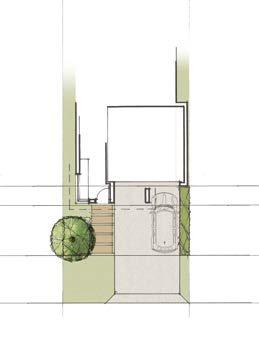
• To provide an activated streetscape.
• To provide an articulated streetscape with diversity of built form outcomes.
• To provide a clearly identifiable sense of entry to all dwellings which is perceived as the dominant element in the streetscape hierarchy.
• Adopts sub-tropical design principles.
1. The dwelling shall address the road frontage with:
i. A habitable space with glazed windows and/or doors orientated towards the road frontage providing outlook from the habitable room; or
ii. A defined (be fencing and/or landscape) private open space area orientated towards the road frontage with a minimal area of 10m2 and a minimum dimension of 3m.
2. The form and streetscape elevation of the dwelling shall be planned to ensure the car accommodation (garage and/ or carport) is setback further than the line of the habitable space or the defined private open space.
3. The form and streetscape elevation of the dwelling shall include varying built elements, roof profiles, eave heights and materials to assist in articulation.
4. Opening to the garage and/or carport shall be no greater than 5.5m in width.
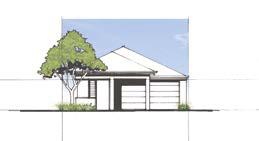
5. The entry to the dwelling shall be clearly identifiable from the road frontage by one or more of the following:
i. Entry door being visible from the road frontage
ii. Gatehouse type element addressing the streetscape
iii. Landscape treatment.
6. A gatehouse shall read as an integrated part of the built form of the dwelling and shall be planned forward of the garage/ carport.
7. Gates and fences addressing the road alignment shall generally be 1500mm in height and no less than 50% transparency.
8. Where two garage and/or carport doors are introduced to articulate the elevation, the door closest to the entry and/ or gatehouse may have a road alignment setback of 4.5m. In this instance, the entry and/or the gatehouse structure shall incorporate the garage/carport opening as an integrated built form element.
9. Carport spaces openable to the private open space may provide opportunity for extending private open space. In this instance, a batten type screen to the carport door is encouraged to promote street activation, cross ventilation and increase diversity of the streetscape elevation.
10. The dwelling shall include the following landscape outcomes:
i. Generous landscaping between the road alignment and the entry/defined private open space including a minimum of 5m2 of lowplanting (with a minimum dimension of 1.50m) plus minimum of one 200lt tree as part of this approach; and
ii An identifiable and separated pedestrian path with an alternative material to the driveway with ground cover surround.
11. Dwelling design is to be generally consistent with the Specific Development Controls A ‘Design Outcomes’.
12. Two of the same design Specific Development Controls A ‘Design Outcomes’ are not located next to each other.
‘DESIGN OUTCOMES’ TREATMENTDEFINED

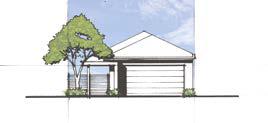

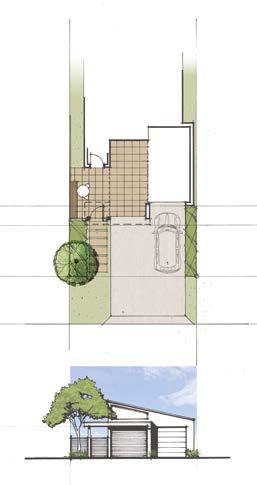


Sheds greater than 9m2 are considered an extension of the main dwelling and must satisfy the building setbacks, external colours and finish of the main dwelling
2 SHADE TRE E S
Position trees around private open space to provide shade during Summer
3 SIDE BOU N DA RY F E NC E
Construct to a maximum height of 1 8 metres
Utilise native plant species
Landscaping of at least 0 5m wide between the driveway and side boundary
Landscaping areas to be maintained to an acceptable standard. Yards are to be clean, tidy and well maintained
Alternative materials and products may be used upon review and consideration by the Design Review Committee.
All landscaping (other than turf ) is to consist of recommended species – Refer to Acceptable Plant Species, Appendix C
Irrigation will assist in water e ciency – appropriate systems are to be installed e.g drip irrigation
Two shade trees of minimum 45 litre pot size are to be planted in the front yard to enhance the front façade appeal Planting to the front façade should integrate with the architectural theme, to add positive visual appeal to the amenity of the street and home alike.
Turf is to be laid between the front of the building and the kerb prior to occupation to
8 B U FFER PL A NTING TO
RE A R BOUN DA RY
Landscaping to the rear boundary is encouraged
Provide appropriate compliance with pool safety codes
1 0 POOL F E NCIN G
Ensure code compliance.
Provide connection to private open space to maximise useablilty
Maximise useable private open space where possible.
UT I LIT I E S
Locate away from recreational neighbours living areas
Fencing to the side boundary is to return a minimum distance of 1m behind the front façade.
Landscaping of at least 3m wide to the site frontage, except where the site fronts an arterial road where at least 5m is required
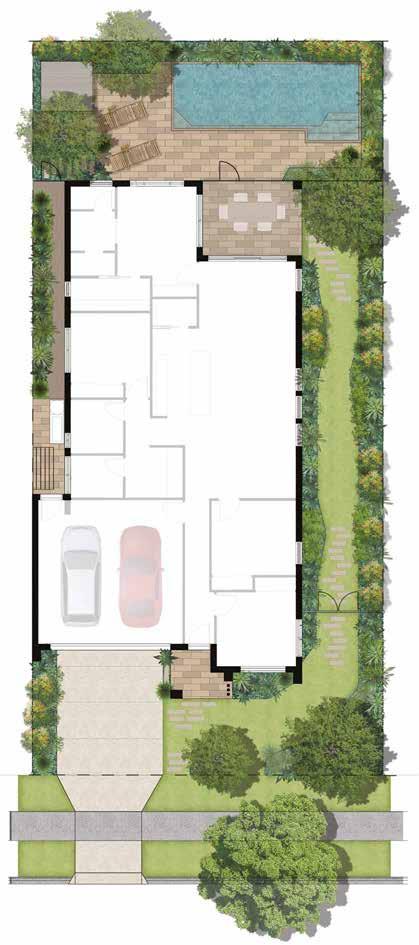
1 5 WE LCOME HOM E
Visual interest at entry A green entry contributing to contemporary architectural design
Streetscape canopy to be integrated into the front landscape to ‘blur ’ the distinction between private and public
We encourage you to look at http://www yourhome gov au/ for much more useful information on building a sustainable home that will save you money and is good for the environment

Optimise
ventilation
natural light to keep
cool and dry,
shelter to outdoor spaces and generous
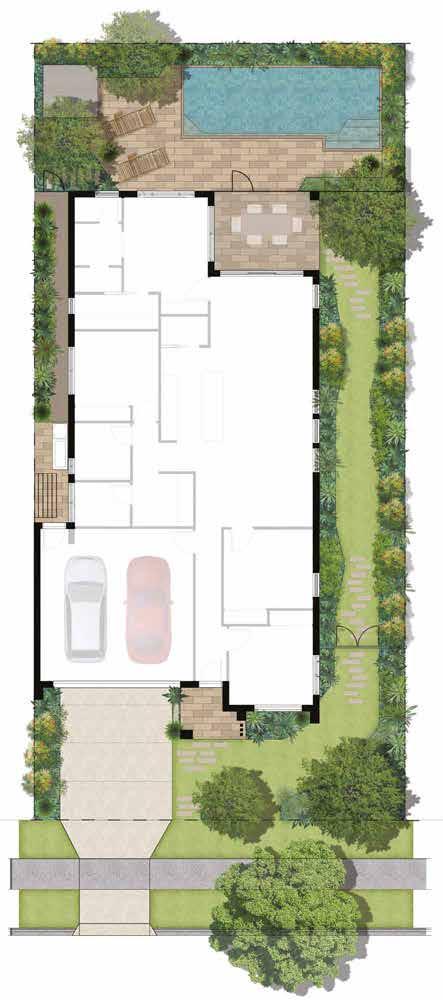
glare and protect from driving rain
trees with large canopies
from surrounding
breezes
service
living
to
aspect where possible to
exposure to
and
in
south
winter winds
AR TI CUL ATI O N :
The recess and/or projection of a wall
B UI L DI N G L INE :
The front wall line of the house
B UI L DI N G HEIGH T :
The vertical distance between the natural ground level and the peak of the roof of the dwelling (not including antennae, or other Ancillary items)
DRC : Design Review Committee

E AVE L INE :
The edge of the roof or parapet
FAÇ A D E :
Face of the building – Façade Area is calculated as a square meter measurement of the entire vertical surface of the house visible from the Street or P ublic Area
GLA Z I N G :
Any fixed or opening glass panel
H A B I TA BL E ROOM :
A room used for living activities, e g a family room, living room, meals or bedrooms
PRI VAT E OP E N S PACE :
The external open areas around th dwelling that are intended exc for the recreational purpose of th residents

SE T B ACK :
The minimum distance between the wall and the property boundary line
S T REE T FRON TAGE :
The front boundary of a lot that fronts the road – on a corner lot the primary street frontage is deemed the shorter side
SI T E COV E R AG E :
The area of the site covered by the building
The roof colours below have
reflect
to 70 per cent of summer heat gain Light coloured COLORBOND® sheeting
keep
This
temperature can mean reduced energy costs for
a
These are
and design approval is not contingent on the use of one the colours below.
WH
S
CL
G
SRI
CO
SRI =



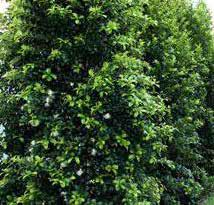

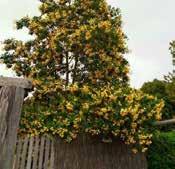
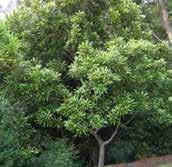
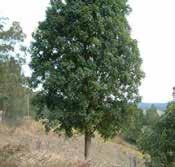
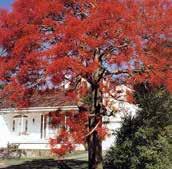




The plant species selection should take into consideration the specific local climatic and soil conditions of the site, to ensure suitability. Planting design should utilise plant hierarchies to optimise shade, screening, ventilation and security.

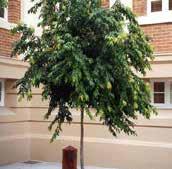
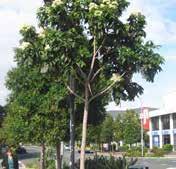

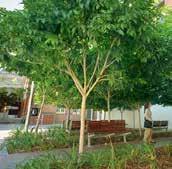
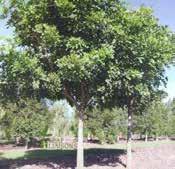
Planting locations are to be determined with solar access and prevailing wind direction in mind and is recommended to make use of the broad planting palette of nominated species in the following table:
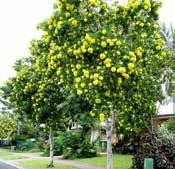 Flame Tree Brachychiton acerifolius
Golden Penda Xanthostemon chrysanthus
Tuckeroo Cupaniopsis anacardioides
Tulipwood Harpullia pendula
Lilly Pilly Acmena smithii
Crow’s Ash Flindersia australis
Queensland Maple Flindersia brayleyana
White Oak Grevillea baileyana
Native Frangipani Hymenosporum flavum
Wheel of Fire Stenocarpus sinuatus
Lilly Pilly Syzygium australe
Weeping lilly pilly Waterhousea floribunda
Callistemon species
Hop Bush Dodonaea triquetra
Grevillea Species
Hovea Hovea acutifolia
Dogwood Jacksonia scoparia
Blue Tongue
Hairy Bush Pea Pultenaea villosa
Maidens Wattle Acacia maidenii
T RE E S
Flame Tree Brachychiton acerifolius
Golden Penda Xanthostemon chrysanthus
Tuckeroo Cupaniopsis anacardioides
Tulipwood Harpullia pendula
Lilly Pilly Acmena smithii
Crow’s Ash Flindersia australis
Queensland Maple Flindersia brayleyana
White Oak Grevillea baileyana
Native Frangipani Hymenosporum flavum
Wheel of Fire Stenocarpus sinuatus
Lilly Pilly Syzygium australe
Weeping lilly pilly Waterhousea floribunda
Callistemon species
Hop Bush Dodonaea triquetra
Grevillea Species
Hovea Hovea acutifolia
Dogwood Jacksonia scoparia
Blue Tongue
Hairy Bush Pea Pultenaea villosa
Maidens Wattle Acacia maidenii
T RE E S

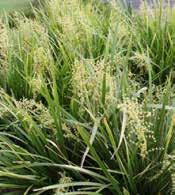

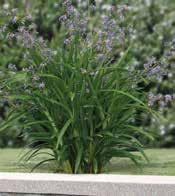








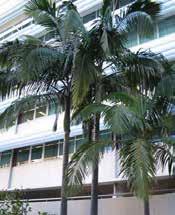


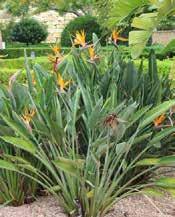

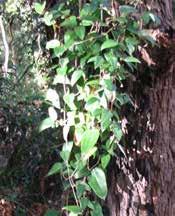

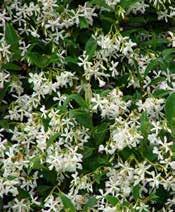 Spider Lily Hymenocallis littoralis
Creek Matt Rush Lomandra hystrix
Native Ginger Alpinia caerulea
Blue Flax Lily Dianella caerulea
Spoon Lily Alocasia brisbanensis
Swamp Lily Crinum pedunculatum
Fruited Palm Lily Corydline congesta
Yellow Buttons Chrysocephalum apiculatum
Lacy Tree Fern Cyathea cooperi
Spear Lily Doryanthes excelsa
Rough Tree Fern Cyathea australis
Cabbage Palm Livistona australis
Bangalow Palm Archontophoenix cunninghamiana
Foxtail Palm Wodyetia bifurcate
Grass Tree Xanthorrhoea johnsonii
Bird of Paradise Strelitzia reginae
Native Passionfruit Passiflora herbertiana
Sweet Sarsparilla
Bower of Beauty Pandorea jasminoides
Star Jasmine Trachelospermum jasminoides
Spider Lily Hymenocallis littoralis
Creek Matt Rush Lomandra hystrix
Native Ginger Alpinia caerulea
Blue Flax Lily Dianella caerulea
Spoon Lily Alocasia brisbanensis
Swamp Lily Crinum pedunculatum
Fruited Palm Lily Corydline congesta
Yellow Buttons Chrysocephalum apiculatum
Lacy Tree Fern Cyathea cooperi
Spear Lily Doryanthes excelsa
Rough Tree Fern Cyathea australis
Cabbage Palm Livistona australis
Bangalow Palm Archontophoenix cunninghamiana
Foxtail Palm Wodyetia bifurcate
Grass Tree Xanthorrhoea johnsonii
Bird of Paradise Strelitzia reginae
Native Passionfruit Passiflora herbertiana
Sweet Sarsparilla
Bower of Beauty Pandorea jasminoides
Star Jasmine Trachelospermum jasminoides


Please provide the following details for the submission of plans to the Design Review Committee
Submit to: brookhaven-drp@frasersproperty com.au
Subject line: Brookhaven Lot XX Street Name
Lot number:
Street name: Stage:
Name:
Current address: Tel: Email:
Please allow for 10 working days for processing and assessment on the provision that all required documentation is submitted and ensure you have checked and included the following
Site plan (min. scale 1:200) including: setbacks from all boundaries, site levels (contours), extent of earthworks, finished
level to house and garage, driveway access and path details, all fencing materials, location and heights
Dimensioned floorplans (min. scale 1:100) including: window positions and roof plan
All elevations (min. scale 1:100) including: building and wall heights, roof pitches, eave size, external fixtures, and external surface finishes
of external materials including: colours, finishes and driveway
plan including: letterbox, landscaping garden beds, screened ancillary items and driveway
We acknowledge we have read and understand and agree to comply with the Brookhaven Design Guidelines
Buyers Name:
Current address: Signed: Dated:
Submit to: brookhaven-drp@frasersproperty.com.au
Subject line: Brookhaven Lot XX Street Name Covenant Rebate Attachments: Include a minimum of three photos of your completed house, completed landscaping, and completed fencing. A copy of your certificate of occupancy must be included.
Lot number:
Property address: Builder:
Date
certificate:
Full name:
Phone:
Email:
Account Name:
Mobile:
BSB: Account: Branch:
The house has been completed in accordance with the Covenant Approved Plans and conditions, with no omissions or changes made.
Fencing has been completed in accordance with the Covenant Approved Plans and conditions. Colourbond fencing has not been installed, and any Developer Installed Fencing or retaining has not been removed or altered.
Landscaping has been completed in accordance with the Covenant Approved Plans and conditions.
I acknowledge that non-conformance with Submission Requirements may invalidate the Covenant Rebate in its entirety, and confirm that I have constructed my house, landscaping and fencing in accordance with the Covenant Approved Plans without variation. I understand that further detail may be requested in order to confirm my eligibility for the Design Covenant Rebate.
Buyers name: Postal address (if different from property address): Signed: Dated:
om a u
M eno ra R o ad, Bahr s S c rub QL D 42 07
Disclaimer: - An Approval issued under these Design Guidelines is NOT an approval under the requirements of the Building Act, or any other Act or Regulation The documents provided have not been checked for compliance with any structural health, or planning requirements or for the suitability of the building for the use to which it may be put. Accordingly Frasers Property Australia, it s Architects, and/or its employees or representatives do not accept any responsibility for the suitability or soundness of construction of the completed Buildings or the associated site development works